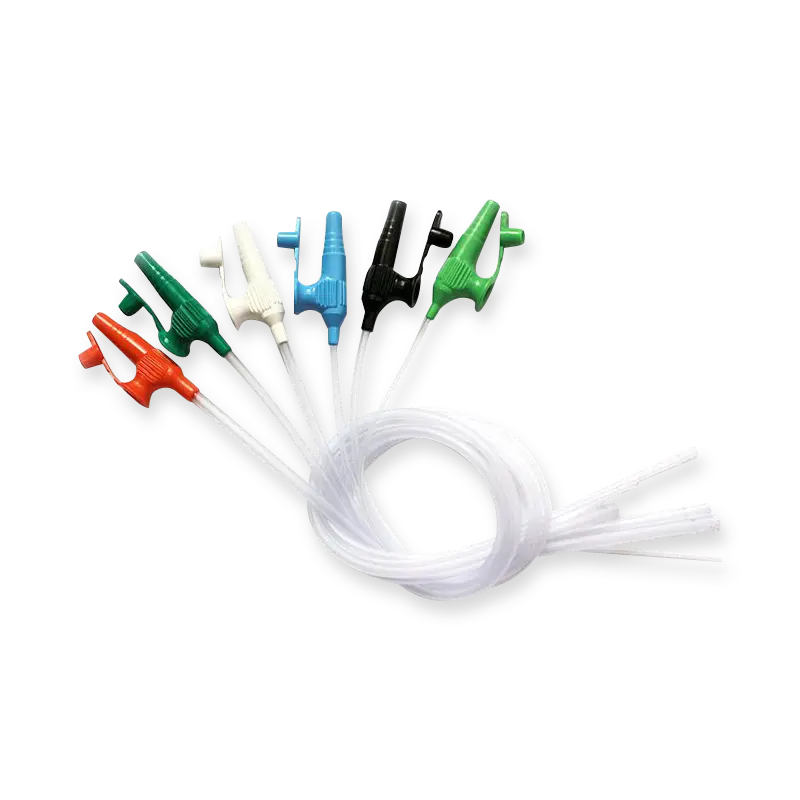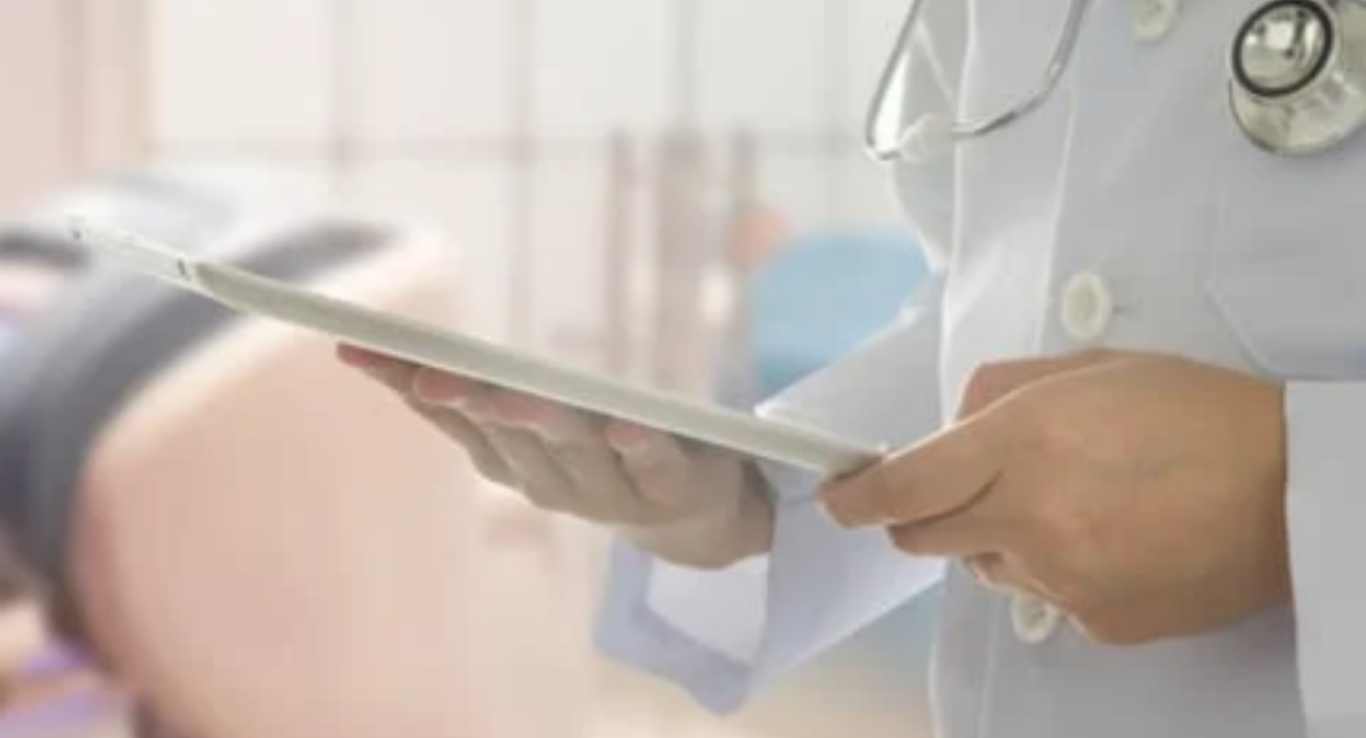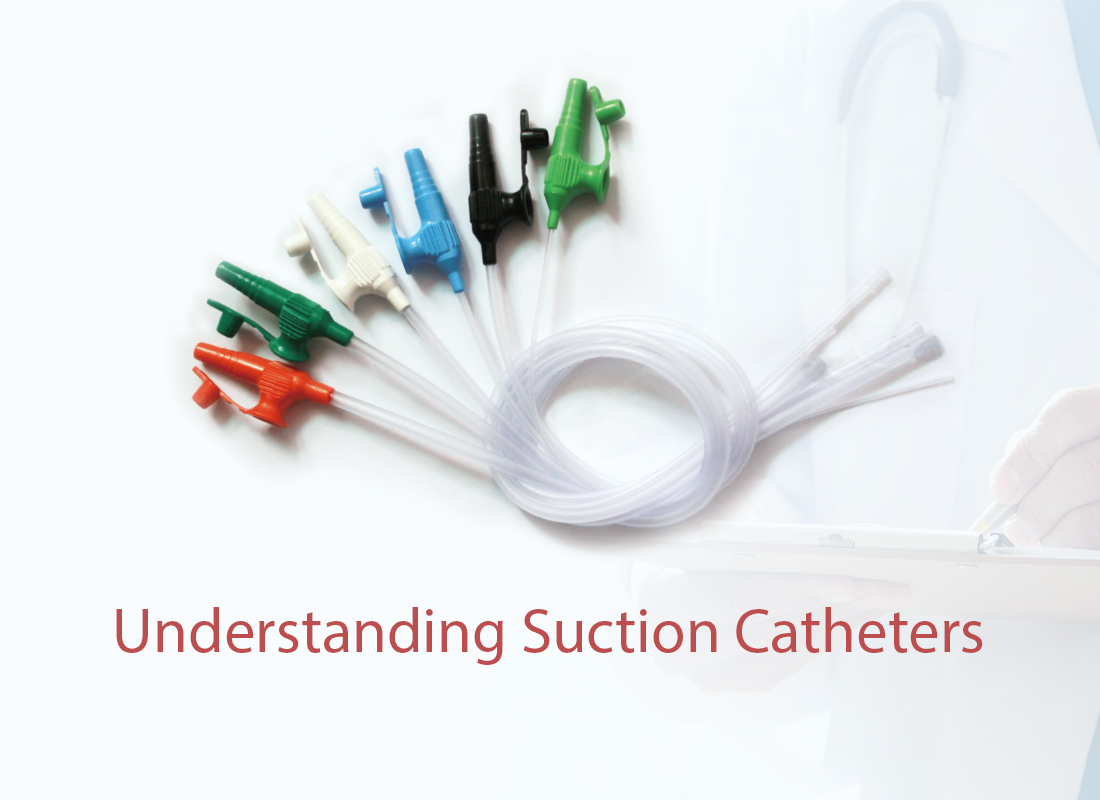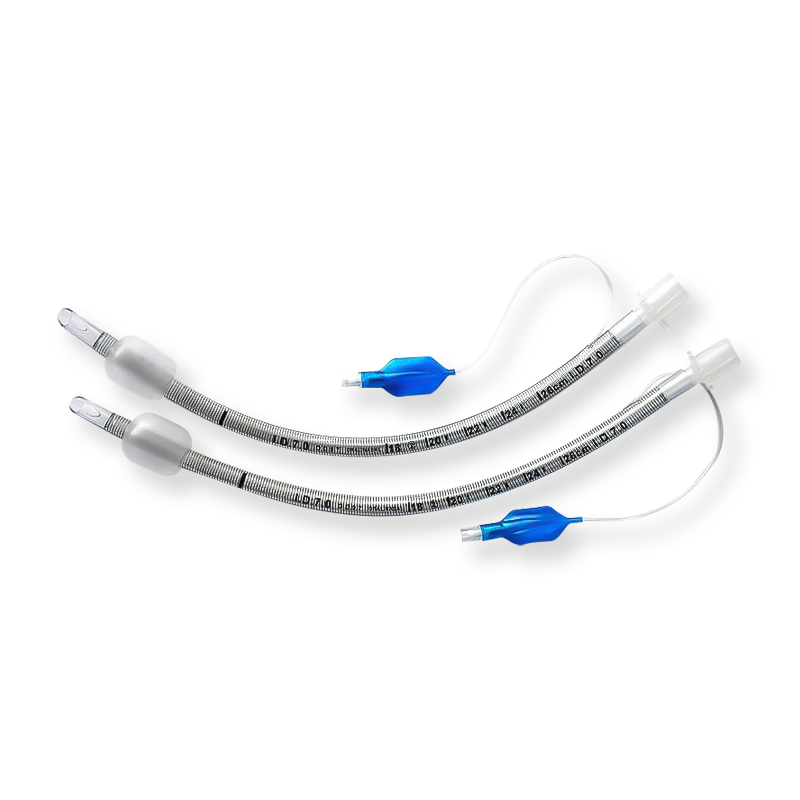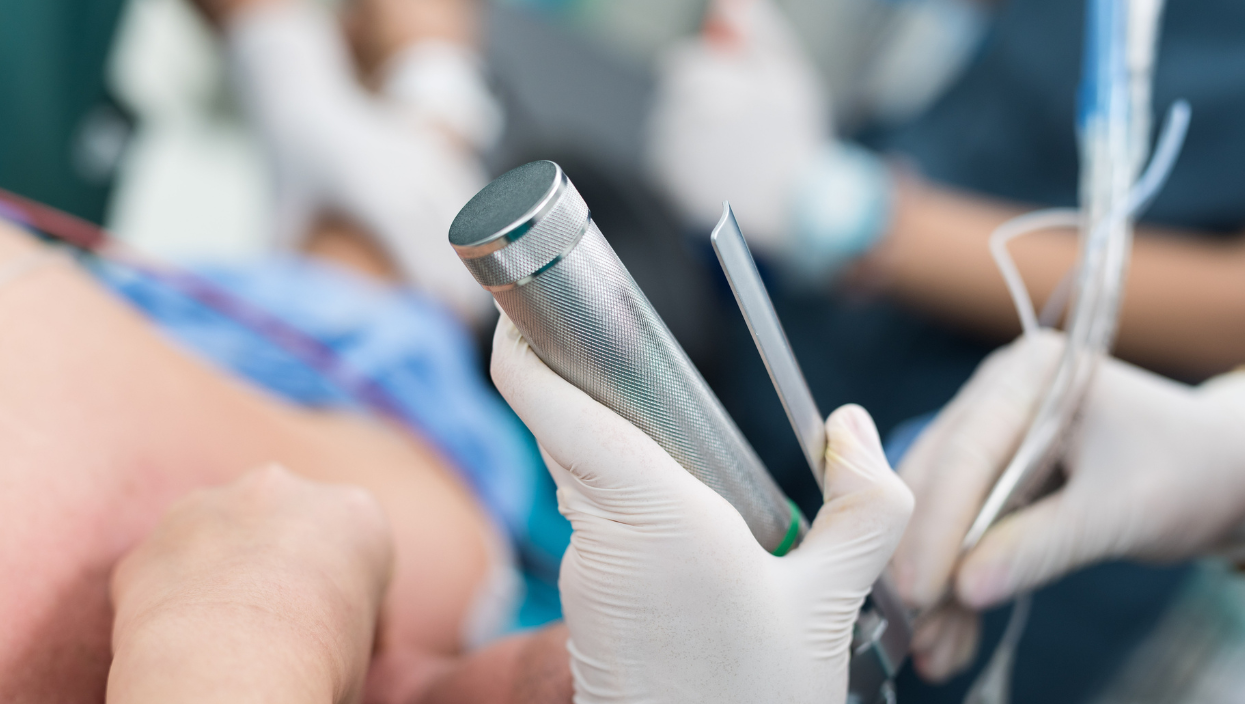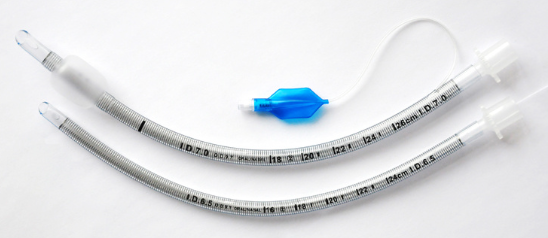Suctioning helps patients clear airway secretions effectively and prevents them from breathing problems. And the correct suction catheter size is a key factor in effective suctioning. Because the wrong size can lead to tracheal damage, mucosal injury, or even blockage of the tracheal tube, deprivation. However, mastering the tips for choosing the right suction catheter can minimize risks and improve treatment outcomes. In this article, you can get the complete guide, let's get started. What is a Suction Catheter? The suction catheter is widely used in hospitals, clinics, and even home care settings. It consists of three parts, the catheter, suction control device, and connector. It aims to remove secretions, blood, or other fluids from a patient's airway or respiratory tract. The catheter connects to a suction source through its connector and is used to suction out mucus and secretions from the tracheal tube. It's a long, soft tube usually made of plastic or rubber. One end is connected to suction equipment like a vacuum pump, and the other end is inserted into the patient's mouth, nose, or tracheal tube to clear the airway. Important: Suction catheters are single-use, sterile products and should never be reused. Why is Proper Suction Catheter Important? Using the wrong size suction catheter can lead to several problems. For example, a small catheter may not remove airway secretions effectively. And may leave behind secretions, increasing the risk of airway blockage and infection, finally worsening the patient's breathing. On the other hand, a too one can take up too much airway space during suctioning, reducing airflow and causing oxygen deprivation. It may also cause more friction against the airway walls, increasing the risk of mucosal injury or bleeding. So, choosing the proper catheter ensures effective airway clearance while minimizing the risk of complications. How to Choose a Proper Suction Catheter for Patients? Calculating the catheter size is a crucial step in choosing the right suction catheter for the patient. It begins with knowing the tracheal tube size. Here are three common formulas to help you calculate the appropriate suction catheter size: Catheter Size Calculation Formula 1: Tracheal tube internal diameter (ID) × 3 ÷ 2, then select the next largest French size (Fr). Example: If the tracheal tube ID is 8 mm, the calculation is 8 × 3 ÷ 2 = 12. So, choose the next largest size, which is a 14Fr suction catheter. Formula 2: Tracheal tube internal diameter (ID) × 2, then select the next smaller French size (Fr). Example: If the tracheal tube ID is 8 mm, the calculation is 8 × 2 = 16. So, choose the next smaller size, which is a 14Fr suction catheter. Formula 3: Tracheal tube internal diameter (ID) × 2 - 2. Example: If the tracheal tube ID is 8 mm, the calculation is 8 × 2 - 2 = 14. So, use a 14Fr suction catheter. You can use any of these formulas to help determine the correct size for your patient’s tracheal tube. Material Some patients may have sensitivities or allergies to certain materials. The catheter should be made of a non-toxic, patient-friendly material. It should also be soft enough to reduce mucosal damage and allow for easy maneuvering. Catheters with Side Holes vs. Without Side Holes Suction catheters with side holes are generally more effective because they are less likely to get blocked by secretions. Larger side holes are typically more efficient. Patient Age and Gender Infants: Use a 5Fr - 8Fr Children: Use a 6Fr - 10Fr Adults: Use a 12Fr - 16Fr Catheter Length Suction catheters typically range from 30 to 50 cm in length. Must choose the right length according to the patient's airway size, it can ensure clear necessary area. Conclusion Selecting the right suction catheter ensures patient safety and effective airway clearance. Through proper size calculation formulas, considering the catheter material, and the patient's age and sex, your patients can get good care while reducing the risk of airway blockage, oxygen deprivation, or mucosal damage. Finally, remember to always prioritize the patient's comfort and safety, and make sure to use high-quality single-use catheters. If you're looking for quality and safe catheter products, you can find them at Bever at competitive prices.
View More +-
02 Oct 2024
The reason why patients are in need of respiratory care is because they are not able to breathe properly and efficiently on their own, resulting in harmful conditions of inadequate oxygenation. People are interested in knowing about respiratory care, especially the fundamentals of respiratory care. In this article, we discuss the aspects of respiratory care fundamentals such as anatomy of respiratory system, needs assessment, respiratory care provided, etc. Anatomy and Physiology of Respiratory System In this part, we will understand the anatomy of respiratory system which includes the upper and lower respiratory tracts. Upper respiratory tract The upper respiratory tract includes the nose, nasal cavity, mouth, pharynx, and larynx. They play an important role because these are the parts which filter, warm, and humidify the air we breathe. Lower respiratory tract The lower respiratory tract has such parts as the trachea, bronchi, bronchioles, and alveoli. The trachea divides into the right and left bronchi, which further branch into bronchioles and end in alveoli. The alveoli are the primary sites for gas exchange, where oxygen enters the blood, and carbon dioxide is expelled. Mechanics of breathing Breathing involves the coordinated action of the diaphragm and intercostal muscles. During inhalation, the diaphragm contracts and moves downward, creating negative pressure in the thoracic cavity, drawing air into the lungs. Exhalation is typically passive, with the diaphragm relaxing and air being pushed out of the lungs. Anatomy of respiratory system Respiratory Assessment to Find out Causes To find out what is the reason behind your respiratory issues, the doctor has tools available such as asking you about your symptoms and occupational risks, performing medical examinations, and doing diagnostic tests. Assessment questions After receiving patients with respiratory problems, the healthcare provider will try to find out the causes of the problem. Based on the causes they can provide effective care to improve patient health. They will ask you about respiratory symptoms, smoking history, occupational exposures, and past medical conditions in order to identify the causes. Physical examination The examination techniques used by the doctor are the following: 1) Observing the patient's respiratory rate, effort, and symmetry 2) Palpation assesses for tenderness, masses, or subcutaneous emphysema 3) Percussion can determine lung density 4) Auscultation with a stethoscope detects abnormal breath sounds, such as wheezes or crackles. Diagnostic tests A. Pulmonary Function Tests (PFTs): These tests measure lung volumes, capacities, and flow rates, providing valuable information about the functional status of the lungs. B. Arterial Blood Gases (ABGs): ABGs assess oxygenation, ventilation, and acid-base balance by measuring the levels of oxygen, carbon dioxide, and bicarbonate in the blood. C. Imaging: Chest X-rays, CT scans, and MRI provide detailed images of the lung structures, helping to identify abnormalities such as tumors, infections, or fluid accumulation. Provision of Healthcare to Patients with Respiratory Issues To promote our understanding of the fundamentals of respiratory care, the following presents descriptions of healthcare interventions intended to improve patient respiratory health and well-being. Oxygen Therapy Oxygen therapy improves oxygenation in patients who has hypoxemia or experiences respiratory distress. In particular, oxygen therapy is provided by your healthcare provider in cases of chronic obstructive pulmonary disease (COPD), pneumonia and heart failure. During surgical procedures this therapy is also necessary. The devices in this therapy are: A. Nasal Cannula delivers low to moderate concentrations of oxygen. B. Simple Mask provides higher concentrations of oxygen than a nasal cannula. C. Non-rebreather Mask delivers high concentrations of oxygen, typically used in severe hypoxemia. D. Venturi Mask allows precise control of oxygen concentrations, suitable for patients requiring specific oxygen levels. Oxygen saturation (SpO2) is monitored using pulse oximetry, a non-invasive method that provides continuous real-time data about the patient’s oxygenation status. A patient being aided with oxygen therapy Mechanical ventilation In cases of severe respiratory failure, apnea, severe hypoxemia, and inadequate spontaneous ventilation, the healthcare provider will provide the patient with mechanical ventilation which supports patients with respiratory failure by ensuring adequate ventilation and oxygenation. Modes of ventilation A. Volume-Controlled Ventilation delivers a set volume of air with each breath. B. Pressure-Controlled Ventilation delivers air until a set pressure is reached. C. Assist-Control Ventilation provides full support with each breath, either initiated by the patient or the ventilator. D. Synchronized Intermittent Mandatory Ventilation (SIMV) allows patients to breathe spontaneously between mandatory breaths. Maintaining airway patency Maintaining airway patency is crucial for adequate ventilation and oxygenation. Here we would like to share with you the following things concerning maintaining airway patency: 1) Intubation is insertion of an endotracheal tube to maintain an open airway 2) Tracheostomy refers to surgical creation of an opening in the trachea to insert a tracheostomy tube, often used for long-term ventilation 3) Oropharyngeal Airway keeps the upper airway open in unconscious patients. 4) Nasopharyngeal Airway (NPA) is used in conscious or semi-conscious patients to maintain airway patency. NPAs help keep the airway open, especially in patients with partial obstructions due to conditions like sleep apnea, severe fatigue, or sedation. It is useful in preventing the collapse of soft tissues in the upper airway, which can obstruct airflow. By keeping the airway open, NPAs help ensure adequate ventilation and oxygenation, reducing the risk of hypoxia. The following is an image of a typical nasopharyngeal airway from a specialized and experienced manufacturer (you can refer to our website for more detailed descriptions: www.bevermedical.com) Image of a typical nasopharyngeal airway Medicines used for respiratory care 1) Bronchodilators, such as albuterol and ipratropium, relax bronchial muscles, relieving bronchospasm and improving airflow. 2) Corticosteroids, like prednisone, reduce airway inflammation and are used in conditions such as asthma and COPD. 3) Mucolytics, such as acetylcysteine, thin mucus, making it easier to expectorate, thereby improving airway clearance. 4) Antibiotics are prescribed to treat bacterial respiratory infections, such as pneumonia and bronchitis. Respiratory diseases Various diseases affect your respiratory health, such as the following. Description of these diseases enriches our knowledge about respiratory care. a. Chronic obstructive pulmonary disease (COPD), which includes chronic bronchitis and emphysema, is characterized by persistent respiratory symptoms and airflow limitation due to airway and/or alveolar abnormalities. b. Asthma is a chronic inflammatory disorder of the airways, resulting in reversible airway obstruction and bronchospasm. c. Pneumonia is an infection that inflames the alveoli, causing them to fill with fluid or pus, leading to cough, fever, and difficulty breathing. d. Pulmonary embolism is a blockage in one of the pulmonary arteries, usually due to blood clots that travel to the lungs from the legs or other parts of the body. e. Interstitial lung disease causes progressive scarring of lung tissue, leading to reduced oxygenation and respiratory function. Kindly Reminder Through the above descriptions we hope you know more about the fundamentals of respiratory care. If you or your loved ones experience respiratory discomfort it is important that you or they receive medical care that is available ASAP.
View More + -
29 Sep 2024
If there are secretions, mucus, or other debris in their respiratory tracts, a suction catheter needs to be used to remove those matters in order to maintain airway patency and prevent respiratory infections. Therefor understanding suction catheters is helpful and important for patients and their concerned families and friends. What Is a Suction Catheter? A suction catheter is a thin, flexible tube designed to be inserted into the patient's respiratory tract, usually through the nose or mouth, to aspirate secretions and other fluids that may cause obstruction or infection. Made from materials such as plastic or silicone, suction catheters are sterile and disposable to ensure patient safety and prevent cross-contamination. Construction of a Suction Catheter Suction catheters, used for removing secretions, mucus, and other debris from a patient's respiratory tract, are carefully engineered in a way that ensures safety, effectiveness, and patient comfort. An explanation of their construction is as follows. 1) Materials Suction catheters are typically made from materials that are soft, flexible, and non-toxic. The most common materials used are described as follows. A. Plastic, such as polyvinyl chloride (PVC) or polyurethane is commonly used in manufacturing suction catheters. Plastic suction catheters are lightweight and cost-effective, making them suitable for routine use. B. Silicone suction catheters are flexible and durable. Suction catheters made with silicone material provides properties of low friction and minimal tissue trauma, and are thus suitable for delicate procedures or for patients with sensitive airways. 2) Tubular Structure The main component of a suction catheter is its tubular structure, as elaborated below. A. Length and Diameter: The length and diameter of the suction catheter vary depending on the intended use and patient's age. Adult suction catheters are typically longer and larger in diameter than pediatric ones. B. Flexibility: The tubular structure is designed to be flexible, allowing it to navigate the curves of the respiratory tract without causing damage to the surrounding tissue. 3) End Design The end of the suction catheter, which is inserted into the patient's respiratory tract, comes in various designs. A. Straight Tip: Suitable for general suctioning procedures. B. Angled or Curved Tip: Designed to facilitate insertion and navigation within the respiratory tract, especially in deeper areas. C. Side Holes: Some suction catheters feature holes along the length of the tube, allowing for more efficient suctioning of secretions. D. End Hole: Others have a single hole at the tip, ideal for targeted suctioning of specific areas. 4) Connection Mechanism The proximal end of the suction catheter, which remains outside the patient's body, is designed to connect to a suction device or machine. A. Luer Lock or Luer Slip Connector: A standardized connection mechanism that allows for easy and secure attachment to the suction device. B. Adapter or Coupler: Some suction catheters come with an adapter or coupler to facilitate connection to different types of suction devices. 5) Sterility and Disposability Suction catheters are typically sterile and intended for single-use only. This ensures patient safety and prevents cross-contamination. 6) Transparency Many suction catheters are made from transparent materials, allowing healthcare professionals to visualize the secretions being aspirated during the procedure. This enhances safety and effectiveness. 7) Markings and Measurements Some suction catheters may have markings or measurements along their length to indicate the depth of insertion; this feature helps healthcare professionals to gauge the appropriate depth for suctioning. An illustrative picture of a suction catheter with markings and measurements 8) Special Features Certain suction catheters may have additional features designed to improve their performance or patient comfort, such as soft, rounded tips which minimize trauma to the respiratory tract. Picture of suction catheters from Hangzhou Bever Medical Device Co., Ltd. Types of Suction Catheters Suction catheters come in various types and classifications, each designed for specific purposes and patient needs. Here are some of the most common types. 1) By Use A. General Suction Catheters: Used for routine suctioning of secretions in the mouth, throat, and upper airways. B. Deep Suction Catheters: Designed for insertion deeper into the respiratory tract, such as the trachea or bronchi, for more extensive suctioning. 2) By Material A. Plastic Suction Catheters: Lightweight and cost-effective, commonly used for general suctioning. B. Silicone Suction Catheters: More flexible and durable, often used for delicate procedures or patients with sensitive airways. 3) By Patient Type A. Adult Suction Catheters: Larger in diameter and length, suitable for adult patients. B. Pediatric Suction Catheters: Smaller and more flexible, designed specifically for use in children. 4) By Design A. Straight Suction Catheters: Simple and easy to use, suitable for most routine suctioning procedures. B. Angled Suction Catheters: Have a curved tip for easier insertion and navigation within the respiratory tract. C. Side-Hole Suction Catheters: Feature holes along the length of the catheter, allowing for more efficient suctioning of secretions. D. End-Hole Suction Catheters: Have a single hole at the tip, ideal for targeted suctioning of specific areas. Suction Catheter Use Instructions Proper use of suction catheters is crucial to ensure patient safety and effectiveness. Here are some general instructions for using suction catheters: 1) Preparation A. Ensure that the suction catheter is sterile and undamaged. B. Check the suction device for proper functioning and adjust the suction pressure according to the patient's needs. 2) Patient Positioning A. Position the patient comfortably, with the head tilted back to facilitate insertion of the suction catheter. B. Use a tongue depressor or other device to open the mouth, if necessary. 3) Insertion and Suctioning A. Lubricate the tip of the suction catheter with water-based lubricant to reduce friction and trauma. B. Insert the suction catheter gently into the patient's respiratory tract, taking care not to force it. C. Apply suction while slowly withdrawing the catheter, rotating it as needed to ensure thorough suctioning. D. Avoid suctioning for more than 10-15 seconds at a time to prevent airway trauma. 4) Monitoring and Post-Procedure Care A. Monitor the patient's vital signs and respiratory status throughout the procedure. B. Observe the aspirated secretions for color, consistency, and volume, which can provide valuable information about the patient's condition. Final Thoughts Understanding suction catheters requires the explanation of what is a suction catheter, its construction, the various types of catheters, and suction catheter use instructions. By now your knowledge of the suction catheter is not only theoretical but also practical. This improved information and knowledge of the catheter may help with allaying the anxieties you previously had arising from lack of information about how it is applied to solve respiratory problems. If you want to see the actual suction catheter products there is a website available: Hangzhou Bever Medical Device Co., Ltd. at www.bevermedical.com.
View More + -
27 Sep 2024
For those who are acquainted with endotracheal tubes, there might be a desire to see some elaboration on cuffed and uncuffed endotracheal tubes. In this article we would like to share with you descriptions of these two types of endotracheal tubes. As we know, an endotracheal tube is a flexible plastic tube that is inserted into the trachea (see definition below) through the mouth or nose. It can be used for maintaining airway patency, and is also useful to facilitate mechanical ventilation (see definition below). Notes: 1) The trachea is the tube in humans extending from the larynx to the bronchi. It is the principal passage for conveying air to and from the lungs; it is also called the windpipe. 2) Mechanical ventilation: If the patient cannot breathe on their own, he/she will need to use a ventilator. The ventilator is a machine that moves breathable air in and out of the lungs. The insertion of an endotracheal tube Cuffed endotracheal tube 1) What is a cuffed endotracheal tube? Cuffed endotracheal tube has an inflatable cuff near the end. The cuff is an inflatable balloon around the end of the tube. Made from silicone or rubber, the cuff, when inflated, presses tightly against the inner wall of the trachea, creating a seal that prevents leakage of air and other substances. 2) Applications where the cuffed endotracheal tube is used A. During mechanical ventilation where the patient is ventilated with a high airway pressure, the cuffed endotracheal tube is the preferred type over the uncuffed type. B. If the patient requires long period of ventilation, this is also the preferred type. The reason is that the cuff when inflated provides an effective seal and stability. C. During laparoscopic surgery and cardiothoracic surgery, the seal between the trachea and tube is supposed to be high and effective, therefore cuffed endotracheal tube is preferred in both procedures. Besides, the use of cuffed endotracheal tube provides better benefits for monitoring respiratory mechanics (you can monitor it more accurately). Moreover, it reduces the loss of volatile drugs, thus helping to lower anesthetic costs. 3) Disadvantages of the Cuffed endotracheal tube As you can see from section about the application of cuffed type of tube, this type’s advantages are apparent. So here we discuss its disadvantages. A. Cuffed endotracheal tube has a relatively complicated structure. The insertion and removal of it take certain level of skill. B. You need to be able to precisely control the extent to which the cuff is inflated otherwise over-inflation will cause damage to the tracheal wall. C. If used in children under 8 there is a significant risk of damaging the laryngeal part or the tracheal mucosa. Uncuffed endotracheal tube 1) What is an Uncuffed endotracheal tube? An uncuffed endotracheal tube does not have a cuff. Its tube shape and diameter adapt to the trachea and is thus able to create a seal between the tube and the trachea. Due to its structural simplicity, the uncuffed endotracheal tube is easier to insert and remove. 2) Applications where uncuffed endotracheal tube is used A. Infants and young children, especially those under the age of 8, traditionally have smaller and more delicate airways that can be easily damaged by a cuff. This is reason for use of this type of endotracheal tube. Besides, their cricoid cartilage often acts as a natural seal, making an artificial cuff unnecessary. B. It is used in procedures or situations where intubation is expected to be brief. It is also used in situations where mechanical ventilation pressures are not high. C. Uncuffed endotracheal tube is suitable for emergency tracheal intubation, for instance, we use an uncuffed endotracheal tube in emergency situations such as cardiopulmonary resuscitation because it is a convenient tool easier to insert and remove. 3) Disadvantages of uncuffed endotracheal tube A. There may not be an effective seal between the tube and the trachea, resulting in leakage. B. If the patient needs to undergo mechanical ventilation for a long period or if he/she needs to be ventilated with high airway pressure, the uncuffed endotracheal tube is not the suitable tube to be used. To give you a vivid idea of these two different types of endotracheal tubes, please refer to the following image. If you are interested in specifications and other information about them, you can visit website: www.bevermedical.com Cuffed and uncuffed endotracheal tubes from Bever Medical Devices Recent trends People are becoming more skillful in handling the cuff to avoid its negative effects. The cuff design is improving. The improved design of the cuffed tube minimizes pressure on the tracheal wall while providing an effective seal. So there is an increasing use of cuffed tubes in Pediatrics. Important notes As you can see from the above, cuffed and uncuffed endotracheal tubes have their respective advantages and disadvantages. They are selected to be used in situations where they are suitable, based on factors such as conditions of the patient, needs of surgery or treatment, experience and skills of the medical personnel. The applications of these two types of endotracheal tubes will be optimized and enhanced as medical technologies advance and research intensifies.
View More + -
24 Sep 2024
For people interested in knowing about endotracheal tubes, the most important questions they have are: what is an endotracheal tube, what is the construction of an endotracheal tube, and what are the uses of an endotracheal tube? This article is intended to be informative and provides answers to those key questions. Background Information: What Is the Human Airway The human airway is a complex system that facilitates the intake and expulsion of air during respiration. It comprises several distinct sections, each with its unique anatomical features and functional roles. Nasal Cavity This is the starting point of the respiratory tract, located in the face. The nasal cavity filters, warms, and humidifies inhaled air, reducing the irritants that would otherwise reach the lower respiratory tract. Its intricate structure, including nasal hairs, mucous membranes, and sinuses, contributes to these functions. Pharynx Serving as a common passage for both the respiratory and digestive tracts, the pharynx is divided into three main regions: nasopharynx, oropharynx, and laryngopharynx. Each of these regions has specialized roles in swallowing, voice production, and protecting the airway from foreign bodies. Larynx (Voice Box) Located below the pharynx, the larynx contains the vocal folds (also known as vocal cords), which are crucial for sound production. Additionally, the larynx acts as a gatekeeper, preventing food and liquids from entering the lungs during swallowing. Trachea (Windpipe) The trachea is a rigid, cylindrical tube that connects the larynx to the lungs. It is composed of rings of cartilage reinforced by smooth muscle, which allows it to maintain its shape while also being flexible enough to accommodate changes in air pressure during breathing. The trachea's lining is covered with ciliated epithelium and mucus-secreting glands, which help clear debris and pathogens from the airway. Bronchial Tree The trachea branches into the right and left main bronchi upon entering the lungs. These bronchi further divide into smaller and smaller bronchioles, eventually terminating in tiny alveoli where gas exchange occurs. The bronchial tree's intricate branching pattern ensures that air is distributed evenly throughout the lungs. Like the trachea, the bronchi and bronchioles are lined with ciliated epithelium and mucus-producing glands, which are vital for maintaining airway health. What Is an Endotracheal Tube An endotracheal tube (ETT) is a flexible, plastic tube that is inserted through the mouth or nose into the trachea (windpipe) to establish and maintain an open airway during medical procedures or in critically ill patients who require mechanical ventilation. It serves as a conduit for delivering oxygen and removing carbon dioxide from the lungs, ensuring adequate gas exchange and preventing airway obstruction. A typical endotracheal tube Construction of an Endotracheal Tube The construction of an endotracheal tube (ETT) typically involves several key components and features, as outlined below. Tube Material ETTs are commonly made of flexible, medical-grade plastics such as PVC (polyvinyl chloride) or silicone. These materials are chosen for their durability, flexibility, and biocompatibility. Tube Diameter and Length The diameter and length of the ETT are carefully selected based on the patient's age, size, and medical needs. Smaller ETTs are used for pediatric patients, while larger ETTs are required for adults. The length of the ETT is sufficient to extend from the patient's mouth or nose to the distal end, which sits within the trachea. Cuff Design Most ETTs have an inflatable cuff near the distal end. This cuff can be inflated with air or gas to create a seal between the ETT and the tracheal wall, minimizing the risk of aspiration and improving ventilation efficiency. The cuff is typically made of a soft, compliant material to minimize tracheal trauma. Distal End Shaping The distal end of the ETT is shaped to facilitate insertion through the vocal cords and into the trachea. It may have a rounded or beveled tip to reduce trauma to the vocal cords and trachea. Additionally, the distal end may be tapered to conform to the triangular-shaped space between the vocal cords, making insertion easier. Ports or Perforations Some ETTs have small ports or perforations in the walls of the tube, particularly in the tapered section near the distal end. These ports allow for the passage of air and secretions, reducing the risk of obstruction and improving ventilation. Proximal End Components The proximal end of the ETT remains outside the patient's body and connects to a ventilator or breathing circuit. It typically includes a connector for attaching to the ventilator tubing, a pilot balloon for monitoring cuff inflation, and a valve for adjusting cuff pressure. Additional Features Some ETTs may have additional features designed to improve patient comfort, safety, and ease of use. For example, some ETTs have a soft, rounded Murphy eye (a small indentation or notch in the wall of the tube) to reduce the risk of tracheal injury during insertion. Others may have an X-ray opaque line running through the length of the tube to aid in its visualization during radiographic procedures. Uses of an Endotracheal Tube An endotracheal tube (ETT) is used in various medical situations, primarily when there is a need to secure and maintain an open airway for a patient who is unable to breathe adequately on their own. Here are some specific scenarios where an endotracheal tube might be utilized: General Anesthesia During surgical procedures that require general anesthesia, an ETT is inserted to ensure that the patient's airway remains open and unobstructed, allowing for controlled ventilation with oxygen-rich gases. This prevents hypoxia (lack of oxygen) and ensures proper anesthesia depth. Airway Obstruction In cases where a patient's airway is obstructed due to various reasons (e.g., foreign body, trauma, swelling, or anatomical abnormalities), an ETT can be placed to bypass the obstruction and establish a patent airway. Critical Illness Critically ill patients, such as those with respiratory failure, pneumonia, or acute respiratory distress syndrome (ARDS), may require mechanical ventilation through an ETT to support their breathing. Trauma or Resuscitation In emergency situations, such as trauma or cardiac arrest, an ETT may be inserted to facilitate resuscitation efforts and ensure adequate ventilation. Long-term Ventilation In some cases, patients may require long-term mechanical ventilation due to chronic conditions. An ETT may be used in these situations. Our Intentions By discussing what is an endotracheal tube, the construction of an endotracheal tube, and the uses of an endotracheal tube, we have made you more acquainted with endotracheal tubes so that you have a better comprehension of the device. This enhanced knowledge might be of help to your future inquiries (You can take a look at this website if you want to dig into more details of the tubes: www.bevermedical .com).
View More + -
19 Sep 2024
For those who are acquainted with endotracheal tubes, there might be a desire to see some elaboration on cuffed and uncuffed endotracheal tubes. In this article we would like to share with you descriptions of these two types of endotracheal tubes. As we know, an endotracheal tube is a flexible plastic tube that is inserted into the trachea (see definition below) through the mouth or nose. It can be used for maintaining airway patency, and is also useful to facilitate mechanical ventilation (see definition below). Notes: 1) The trachea is the tube in humans extending from the larynx to the bronchi. It is the principal passage for conveying air to and from the lungs; it is also called the windpipe. 2) Mechanical ventilation: If the patient cannot breathe on their own, he/she will need to use a ventilator. The ventilator is a machine that moves breathable air in and out of the lungs. The insertion of an endotracheal tube Cuffed endotracheal tube 1) What is a cuffed endotracheal tube? Cuffed endotracheal tube has an inflatable cuff near the end. The cuff is an inflatable balloon around the end of the tube. Made from silicone or rubber, the cuff, when inflated, presses tightly against the inner wall of the trachea, creating a seal that prevents leakage of air and other substances. 2) Applications where cuffed endotracheal tube is used A. During mechanical ventilation where the patient is ventilated with a high airway pressure, the cuffed endotracheal tube is the preferred type over the uncuffed type. B. If the patient requires long period of ventilation, this is also the preferred type. The reason is that the cuff when inflated provides an effective seal and stability. C. During laparoscopic surgery and cardiothoracic surgery, the seal between the trachea and tube is supposed to be high and effective, therefore cuffed endotracheal tube is preferred in both procedures. Besides, the use of cuffed endotracheal tube provides better benefits for monitoring respiratory mechanics (you can monitor it more accurately). Moreover, it reduces the loss of volatile drugs, thus helping to lower anesthetic costs. 3) Disadvantages of cuffed endotracheal tube As you can see from section about the application of cuffed type of tube, this type’s advantages are apparent. So here we discuss its disadvantages. A. Cuffed endotracheal tube has a relatively complicated structure. The insertion and removal of it take certain level of skill. B. You need to be able to precisely control the extent to which the cuff is inflated otherwise over-inflation will cause damage to the tracheal wall. C. If used in children under 8 there is a significant risk of damaging the laryngeal part or the tracheal mucosa. Uncuffed endotracheal tube 1) What is an Uncuffed endotracheal tube? An uncuffed endotracheal tube does not have a cuff. Its tube shape and diameter adapt to the trachea and is thus able to create a seal between the tube and the trachea. Due to its structural simplicity, the uncuffed endotracheal tube is easier to insert and remove. 2) Applications where uncuffed endotracheal tube is used A. Infants and young children, especially those under the age of 8, traditionally have smaller and more delicate airways that can be easily damaged by a cuff. This is reason for use of this type of endotracheal tube. Besides, their cricoid cartilage often acts as a natural seal, making an artificial cuff unnecessary. B. It is used in procedures or situations where intubation is expected to be brief. It is also used in situations where mechanical ventilation pressures are not high. C. Uncuffed endotracheal tube is suitable for emergency tracheal intubation, for instance, we use an uncuffed endotracheal tube in emergency situations such as cardiopulmonary resuscitation because it is a convenient tool easier to insert and remove. 3) Disadvantages of uncuffed endotracheal tube A. There may not be an effective seal between tube and the trachea, resulting in leakage. B. If the patient needs to undergo mechanical ventilation for a long period or if he/she needs to be ventilated with high airway pressure, the uncuffed endotracheal tube is not the suitable tube to be used. To give you a vivid idea of these two different types of endotracheal tubes, please refer to the following image. If you are interested in specifications and other information about them, you can visit website: www.bevermedical.com Cuffed and uncuffed endotracheal tubes from Bever Medical Devices Recent trends People are becoming more skillful in handling the cuff to avoid its negative effects. The cuff design is improving. The improved design of the cuffed tube minimizes pressure on the tracheal wall while providing an effective seal. So there is an increasing use of cuffed tubes in Pediatrics. Important notes As you can see from the above, cuffed and uncuffed endotracheal tubes have their respective advantages and disadvantages. They are selected to be used in situations where they are suitable, based on factors such as conditions of the patient, needs of surgery or treatment, experience and skills of the medical personnel. The applications of these two types of endotracheal tubes will be optimized and enhanced as medical technologies advance and research intensifies.
View More +


